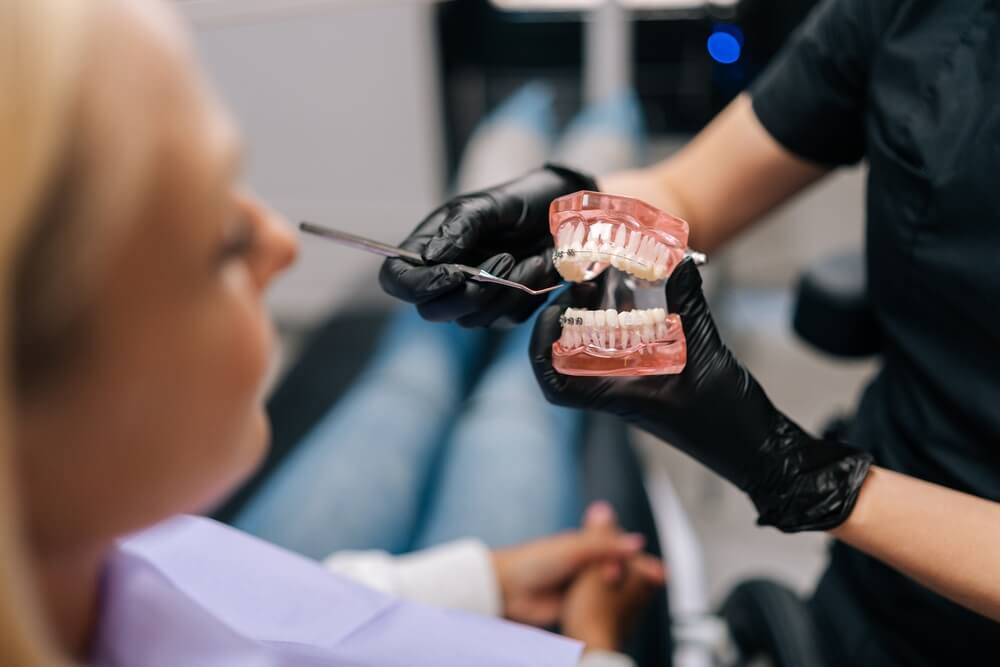Getting braces is a significant step towards achieving a beautiful, healthy smile. However, taking care of your braces properly is crucial to ensure effective treatment and maintain oral health. At Perfect Smile Spa, we’re here to provide you with friendly and knowledgeable guidance on how to care for your braces. Whether you’re new to braces or need a refresher, these tips will help you navigate your orthodontic journey with confidence.
Understanding Your Braces
Types of Braces
Braces come in various types, each designed to address different orthodontic needs. The most common types include:
- Traditional Metal Braces: Made of high-grade stainless steel, these are the most common type of braces. They consist of metal brackets and wires.
- Lingual Braces: Placed on the inside surface of the teeth, these braces are hidden from view.
- Invisalign: These are clear, removable aligners that gradually straighten teeth without the use of brackets or wires.
Understanding the type of braces you have will help you follow specific care instructions tailored to your treatment.
How Braces Work
Braces apply continuous pressure to your teeth over time, gradually moving them into their desired positions. For metal braces brackets are bonded to your teeth and connected by an archwire. Adjustments are made periodically to maintain the pressure and guide the teeth into alignment. This process can take several months to a few years, depending on your individual needs and your goals. At Perfect Smile Spa your Invisalign in Essex works by using custom aligners that are changed approx. every two week to force your teeth into a new alignment,
Daily Oral Hygiene with Braces
Brushing Techniques
Brushing your teeth properly is even more critical when you have braces. Here’s how to do it effectively:
- Use a Soft-Bristled Toothbrush: Opt for a toothbrush with soft bristles to avoid damaging your braces and gums.
- Brush After Every Meal: Food particles can get trapped in your braces, so it’s important to brush after every meal.
- Angle Your Brush: Hold your toothbrush at a 45-degree angle to the gums and brush gently in circular motions. Pay extra attention to the brackets and wires.
- Brush All Surfaces: Ensure you brush the outer, inner, and chewing surfaces of your teeth. Don’t forget the tongue and roof of your mouth.
- Use Fluoride Toothpaste: This helps strengthen your teeth and prevent cavities.
Flossing Methods
Flossing with braces can be challenging, but it’s essential for removing plaque and preventing gum disease. Here’s how to make it easier:
- Use a Floss Threader: A floss threader helps guide dental floss under the wires of your braces.
- Interdental Brushes: These small, bristle brushes can clean between the brackets and wires.
- Water Flossers: A water flosser can effectively clean between teeth and around braces using a stream of water.
Be patient and gentle when flossing to avoid damaging your braces.
Eating with Braces
Foods to Avoid
Certain foods can damage your braces or get stuck in the brackets and wires. To protect your braces and ensure effective treatment, avoid:
- Hard Foods: Nuts, hard candies, and ice can break brackets and wires.
- Sticky Foods: Chewing gum, caramels, and toffees can get stuck in your braces.
- Crunchy Foods: Popcorn, crisps, and raw vegetables like carrots can cause damage.
- Chewy Foods: Bagels and hard rolls can be tough on your braces.
Braces-Friendly Foods
Opt for softer foods that are easier to chew and won’t damage your braces. Some braces-friendly options include:
- Dairy: Yogurt, soft cheese, and milk are gentle on your braces and provide essential nutrients.
- Fruits: Soft fruits like bananas, berries, and melons are good choices.
- Vegetables: Cooked or steamed vegetables are easier to eat.
- Proteins: Tender meats, fish, eggs, and tofu are braces-friendly.
- Grains: Soft bread, pasta, and rice are safe to eat with braces.
By choosing the right foods, you can protect your braces and enjoy a varied diet.
Food and aligner
You will be advised to remove your aligners when you are eating and drinking to ensure that no food or drink is left sitting in your aligner against your teeth, which can lead to poor dental health. It is also recommended to brush your teeth after each meal before putting your aligners back on.
Managing Discomfort and Emergencies
Handling Pain and Discomfort
It’s normal to experience some discomfort, especially after getting braces or having adjustments. Here are some tips to manage the pain:
- Over-the-Counter Pain Relievers: Medications like ibuprofen or paracetamol can help alleviate pain.
- Orthodontic Wax: Apply wax to the brackets or wires causing irritation to reduce discomfort.
- Rinsing with Warm Salt Water: This can soothe sore gums and reduce inflammation.
- Soft Foods: Stick to soft foods and avoid anything that might aggravate the discomfort.
What to Do in Case of Emergencies
Orthodontic emergencies can happen, but knowing how to handle them can prevent further issues. Common emergencies include:
- Loose Brackets or Bands: Use orthodontic wax to hold them in place temporarily and contact your orthodontist.
- Poking Wires: Use a pencil eraser or cotton swab to gently push the wire back into place or cover it with wax.
- Mouth Sores: Rinse with warm salt water and apply a topical anesthetic if necessary.
Always reach out to your orthodontist if you’re unsure how to handle an emergency.
Regular Dental Visits
Importance of Check-Ups
Regular check-ups are essential for monitoring your progress and making necessary adjustments. During these visits, your orthodontist will:
- Adjust the Wires: Tighten or replace the wires to continue guiding your teeth into alignment.
- Check for Problems: Identify and address any issues with your braces or oral health.
- Provide Guidance: Offer tips and advice for maintaining your braces and oral hygiene.
Professional Cleanings
Professional cleanings are crucial for maintaining oral health while wearing braces. Your dental hygienist will:
- Remove Plaque and Tartar: Clean areas that are difficult to reach with regular brushing and flossing.
- Check for Cavities: Ensure there are no developing cavities or other issues.
- Polish Teeth: Keep your teeth looking clean and healthy.
Regular dental visits complement your at-home care routine and help ensure successful orthodontic treatment.
Perfect Smile Spa: Your Partner in Orthodontic Care
Our Approach to Braces
At Perfect Smile Spa, we are committed to providing exceptional orthodontic care tailored to your unique needs. Our approach includes:
- Personalised Treatment Plans: We assess your individual needs and create a customised treatment plan.
- State-of-the-Art Technology: We use the latest orthodontic technology to ensure efficient and effective treatment.
- Comprehensive Care: From initial consultation to final retainer, we provide comprehensive care throughout your orthodontic journey.
Meet Our Expert Team
Our team, led by Dr. Jas Sagoo, has extensive experience in orthodontics. With numerous awards and a passion for creating beautiful smiles, we are dedicated to providing the highest level of care. Our friendly and knowledgeable staff are here to support you every step of the way.
Caring for your braces is essential for achieving a healthy, beautiful smile. By following these tips on daily oral hygiene, eating habits, and managing discomfort, you can ensure effective treatment and maintain excellent oral health. Regular dental visits and professional cleanings are also crucial components of your orthodontic care. At Perfect Smile Spa, we are here to provide expert guidance and support throughout your journey. Contact us today to learn more about our orthodontic in Essex treatment and how we can help you achieve the smile of your dreams.
FAQs
Q.1. How often should I brush my teeth with braces?
Ans: You should brush your teeth after every meal to prevent food particles from getting stuck in your braces and causing plaque build-up.
Q.2. Can I eat sweets with braces?
Ans: It’s best to avoid sticky and hard sweets that can damage your braces. Opt for softer, braces-friendly alternatives and maintain good oral hygiene.
Q.3. What should I do if a bracket comes loose?
Ans: Apply orthodontic wax to secure the bracket temporarily and contact your orthodontist in Essex for an appointment to fix it.
Q.4. How long does it take to get used to braces?
Ans: It typically takes a few weeks to get used to the sensation of wearing braces. Any initial discomfort should subside as you adjust.
Q.5. Why are regular dental visits important during orthodontic treatment?
Ans: Regular visits allow your orthodontist to monitor progress, make necessary adjustments, and ensure your oral health remains optimal throughout your treatment.




 132a High Street
132a High Street 01708442114
01708442114  care@perfectsmilespa.co.uk
care@perfectsmilespa.co.uk


